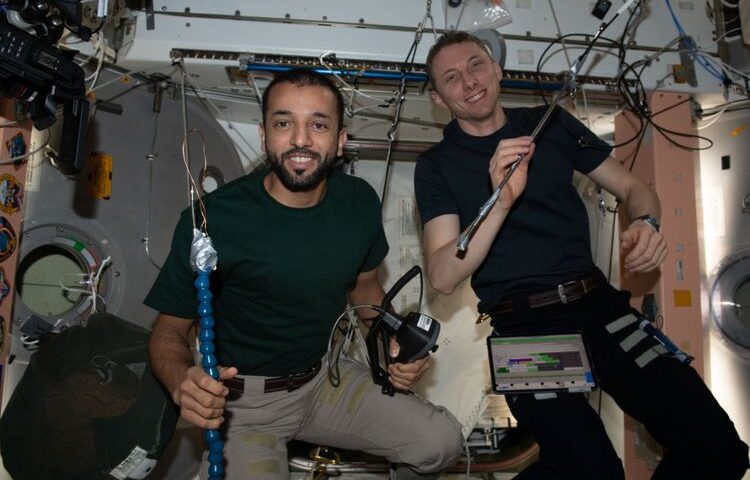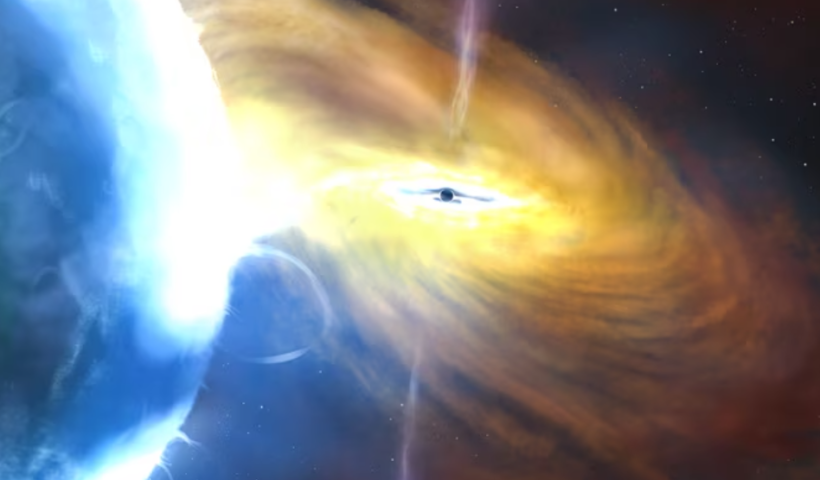Sultan of Space works on Ring Sheared Drop experiment for neuro-degenerative diseases.
UAE astronaut Sultan Al Neyadi, who is on the longest Arab space mission on the International Space Station (ISS), on Monday conducted a space experiment to cure Alzheimer’s disease, US space agency NASA has revealed.
Giving updates about the activities of the seven-member Expedition 69 crew onboard the ISS, NASA said Al Neyadi and NASA astronaut Frank Rubio, who are flight engineers of Expedition 69, worked throughout Monday on experiment hardware supporting advanced space biology research.
“Al Neyadi installed a syringe filled with a protein solution inside the Microgravity Science Glovebox (MSG) for the Ring Sheared Drop (RSD) experiment that may provide potential treatments for neuro-degenerative diseases,” stated NASA.
“Rubio and Al Neyadi also assisted NASA Flight Engineer Woody Hoburg as he worked throughout the day on the Destiny laboratory module’s carbon dioxide removal assembly,” the agency added.
RSD experiment
The Ring Sheared Drop investigation examines the formation and flow of amyloids without the complications associated with the solid walls of a container, because in microgravity, surface tension provides containment of the liquid.
In microgravity, it is possible to observe liquids without the influences of the solid walls of containers. As a crewed microgravity laboratory and test bed, the ISS offers a platform for research on liquids with a variety of applications, from human health to materials, contributing to the ongoing commercialisation of the orbiting lab.
Amyloids are fibrous, extracellular protein deposits found in organs and tissues. They are associated with neurodegenerative diseases such as Alzheimer’s. Results of such experiments could contribute to better understanding of these diseases as well as to development of advanced materials.
MSG operation
The Microgravity Science Glovebox (MSG) is a rack-level facility on the ISS that provides resources and containment for research investigations. It has an airlock, avionics, and a work volume with gloves for crew manipulation. The facility is used for physical science and biological research and offers two levels of containment.
The MSG is operated from the Payloads Operations Integration Center (POIC) and can be remotely controlled from different tele-science centers worldwide. It has transparent walls, cameras for monitoring, and video downlink for real-time observation by scientists on Earth.
Crew members can safely manipulate items inside the sealed work volume by inserting their hands into gloves attached to any of four glove ports on the front and sides of the facility located in the US Laboratory module on ISS.
The orbital lab’s main purpose is gaining scientific knowledge not possible in Earth’s gravity to gain new insights benefitting humans on and off the Earth. Human research and physics are a key part of the microgravity science programme helping NASA and its international partners plan missions to the Moon, Mars, and beyond.
Al Neyadi’s NASA SpaceX Crew-6 members are conducting over 200 science experiments during the six-month space mission that began in March. He has been assigned 19 experiments by universities in the UAE. In April, Al Neyadi had announced his participation in space research to improve the efficiency of treating diabetic foot ulcers through the Maleth project.



:quality(70)/cloudfront-eu-central-1.images.arcpublishing.com/thenational/MPTYOYPJ6NFKVP4F6YTHXHWJIQ.jpg)